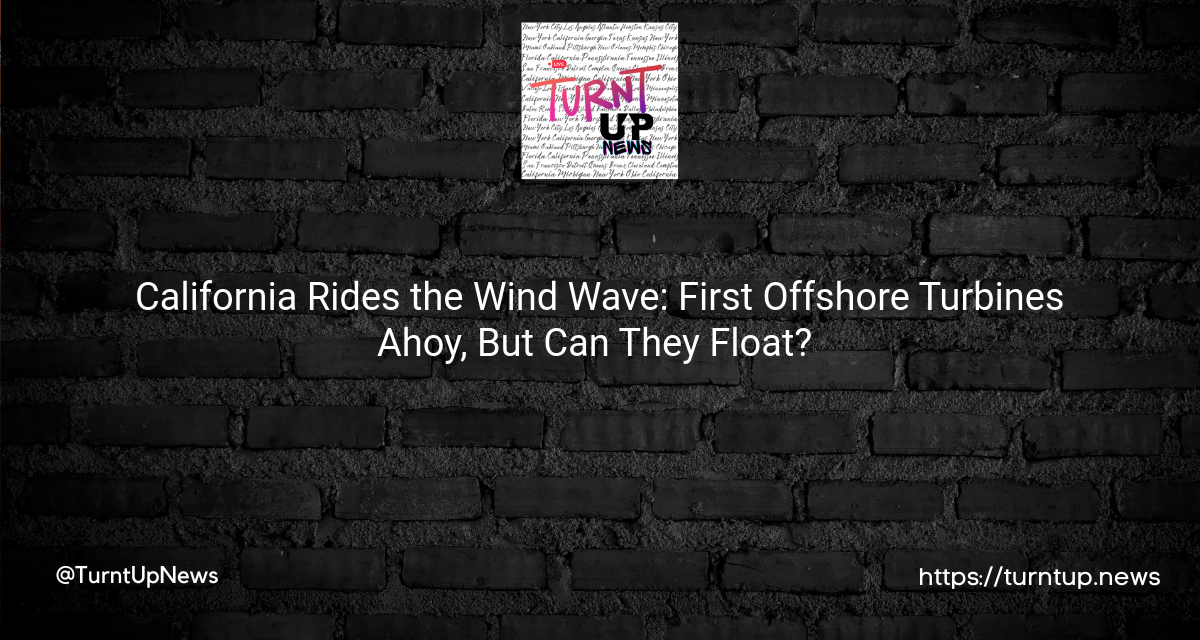🌬️💡 California Rides the Wind Wave: First Offshore Turbines Ahoy, But Can They Float? 🌊🤷♂️
TL;DR; The U.S. is rolling out the red carpet for offshore wind farms off Cali’s coast for the first time! But with the Pacific’s deep blue requiring pricier floating turbines, will it be smooth sailing? 🌊🌪️
If you’ve ever fancied generating some serious wind power while catching some waves on the Californian coast, the universe is listening. 🏄♀️💨
The US Interior Department is all set to auction a whopping five leases spanning 373,000 acres off central and northern California in December. How much power we talking? A possible 4.5 gigawatts. That’s a lot of electric air guitars, folks! 🎸⚡
Now, while the Biden administration is stoked about channeling that offshore wind energy to quench the thirst of power-hungry cities on the West Coast, there’s a twist. Due to the deep waters of the Pacific, the turbines need to float. That’s right, like pool floaties but way more technical (and pricier). Ever heard of floating turbines in the US? Nope? That’s because they haven’t been used commercially here. 🤯🌊
Deb Haaland, the Interior Secretary, voiced her enthusiasm saying, “We are taking another step toward unlocking the immense offshore wind energy potential off our nation’s west coast.” Heck, even President Joe Biden is on board with his ambitious goal of deploying 30 gigawatts of offshore wind by 2030. What’s the catch? These waters ain’t like the Atlantic where regular, ground-hugging turbines do the job because of the shallower waters. 🤓💡
The buzz is real as 43 companies, from Avangrid Renewables to BP US Offshore Wind Energy, are gearing up to bid in the December auction. And get this, if you’re supporting local workforce training and promising to shake hands on project labor agreements, the Interior Department might just roll out some sweet incentives. 🍬📜
But hold on, before you get too blown away, there are a few obstacles (like always, right?). Navigating around US Navy training sessions and keeping an eye out for potential marine sanctuaries might require a little tweaking in those turbine-placing plans. But hey, all in the name of a zero-emission grid by 2045, right? Plus, think of the jobs and the booming supply chains this could kick-start, just like it’s doing on the Atlantic coast. 🏗️🌍
JC Sandberg, interim CEO of the American Clean Power Association, hyped the event stating it “puts California on a path as a global hub for offshore wind technology.” And yet, amidst all this breeze and buzz, there’s a regulatory twist: wind lease awards are now tied to the sale of oil and natural gas drilling rights in US coastal waters. Meaning? The wind leases will only be formally awarded after a Gulf of Mexico oil and gas lease sale, which has to happen by March 31. 📆⏳
Disclaimer: This article is not financial or environmental advice. Always do your research and consult with a professional before making any decisions.💼👨⚖️
So, here’s the million-dollar question, wind enthusiasts: with the challenges and potential of floating turbines in the horizon, are we about to witness a revolution in green energy or just another lofty dream? 🌬️🤔 Let the debate begin! 💬👇




